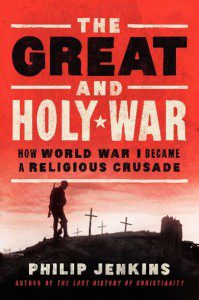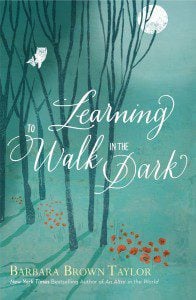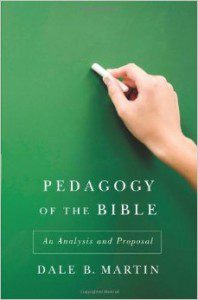The Seven Principles of Unitarian Universalism set a high bar. To list only a few examples:
- the inherent worth and dignity of every person;
- the goal of world community with peace, liberty, and justice for all;
- respect for the interdependent web of all existence.
One of the reasons for such high goals is that many of the theological ancestors of contemporary UUs had an optimistic view of human potential.
Whereas some theological conservatives preached a pessimistic view of human nature (“Original Sin” and “Total Depravity”), Unitarians and Universalists had hope in humanity coming together to build a better world. One influential example from 1886 is Unitarian minister James Freeman Clarke’s “Five Points of the New Theology,” which he wrote as an progressive alternative to the Five Points of Calvinism. Clarke summarized Unitarianism as about (the italicized comments in brackets are mine):
the fatherhood of God, [we share a common source]
the brotherhood of man, [we are, thus, all part of the same family]
the leadership of Jesus, [through emulating his ethics]
salvation by character, and… [human freedom and responsibility]
the progress of mankind onward and upward forever.
You can particularly see the optimism in the final point: “the progress of mankind onward and upward forever.”
Likewise, in a post two weeks ago, I wrote about Theodore Parker, one of the abolitionist Unitarian ministers who was part of the “Secret Six,” who helped fund John Brown’s raid on Harper’s Ferry. In a similarly optimistic vein, Parker said in 1853, “I do not pretend to understand the moral universe; the arc is a long one. . . . But from what I see I am sure it bends toward justice.” Dr. King later borrowed the quote from Parker.
But that nineteenth-century optimism — “the progress of mankind onward and upward forever” and “the arc of the universe bends toward justice” — is much more difficult to maintain today in the early twenty-first century. A major reason is that Clarke, Parker, and others of our nineteenth-century ancestors had no way of predicting the world-altering events that would shape the twentieth century.
And part of my goal in this post is to recognize and reflect that July 28, 2014 marked the 100th anniversary of the assassination of Archduke Franz Ferdinand, which triggered the beginning of World War I. Various centenary commemorations will continue over the next four years through November 11, 2018, which will mark the 100th anniversary of the armistice that ended the First World War. For now, I want to trace some of the journey from that nineteenth-century optimism about human nature and the inevitability of progress through the crucible of the twentieth-century (World War I in particular) to the implications for where we find ourselves today in the early twenty-first century. As a source, I’ll be drawing on Philip Jenkins’ recent book The Great and Holy War: How World War I Became a Religious Crusade.
anniversary of the assassination of Archduke Franz Ferdinand, which triggered the beginning of World War I. Various centenary commemorations will continue over the next four years through November 11, 2018, which will mark the 100th anniversary of the armistice that ended the First World War. For now, I want to trace some of the journey from that nineteenth-century optimism about human nature and the inevitability of progress through the crucible of the twentieth-century (World War I in particular) to the implications for where we find ourselves today in the early twenty-first century. As a source, I’ll be drawing on Philip Jenkins’ recent book The Great and Holy War: How World War I Became a Religious Crusade.
Consider the difference, for instance, between nineteenth-century assertion of “the progress of mankind onward and upward forever” and “the arc of the universe bends toward justice” compared to the first stanza of William Butler Yeats’ poem “The Second Coming,” written in 1919 in the immediate aftermath of World War I. Instead of inevitable optimism, we get
Turning and turning in the widening gyre
The falcon cannot hear the falconer;
Things fall apart; the centre cannot hold;
Mere anarchy is loosed upon the world,
The blood-dimmed tide is loosed, and everywhere
The ceremony of innocence is drowned;
The best lack all conviction, while the worst
Are full of passionate intensity.
And although there are various schools of thought about tracing the history of ideas, there is a strong argument to be made that the turn from Modernism to Postmodernism began with the global trauma of the First World War — the move from a trust in One Grand, Overarching Narrative of Progress to a much more fragmented worldview of many competing and even contradictory narratives about how the world is and should be. No longer could we members of Western Civilization pretend that modern technology and increasing global interconnection was going to inevitably unite us under the “fatherhood of God, the brotherhood of man, the leadership of Jesus, salvation by character, and the progress of mankind onward and upward forever.”
Instead of “the universe bending toward justice,” science tells us that the universe ultimately tends toward entropy, toward disorder, as in Yeats’ poem: “The falcon cannot hear the falconer…the centre cannot hold….” The First World War changed everything about the realization of how much devastation we could wreak on ourselves as a species on a global scale, and, as we know now, the twentieth-century was barely getting started.
From the perspective of a hundred years later, many historians look back on World War I as about “narrow national rivalries and selfish imperial interests” (3). Indeed, “Harry Patch, the last soldier actually to have fought in the war’s trenches and who died in 2009 at the age of 111…said, ‘Two civilized nations, British and German, fighting for our lives…. What the hell we fought for, I now don’t know…” Patch continued, “[The] politicians who took us to war should have been given the guns and told to settle their differences themselves, instead of organizing nothing better than legalized mass murder” (3, 33).
Those are hard words. But modern technology — machine guns, chemical warfare, tanks — made the First World War different and deadly on previously unseen scale (48). Looking only at soldiers, the overall casualties were approximately 10 million. But we can look even to single days such as August 22, 1914 — barely more than a month since the first shot was fired, during that period Barbara Tuchman famously traces in her Pulitzer Prize-winning book The Guns of August — when 27,000 French soldiers died in the Battle of the Frontiers. 27,000 lives lost in one single day (29-31).
At the same time, there are other sides of the story such as the famous Christmas Truce of 1914 in which both British and German soldiers came out of their respective “trenches to fraternize, drink, and even play friendly games of soccer.” But it is no coincidence that the Christmas Truce happened within the first few months of the four-year war. The longer the battle continued, the more entrenched and jaded soldiers became, making events like the Christmas Truce increasingly impossible (46).
And as I’ve explored in a recent post, delegates to the annual Unitarian conference in 1917 in the months after the U.S. entered the war voted overwhelmingly to support the war effort, over the protests of small minority. In contrast, “By far the most significant center of Christian antiwar activism was the Vatican,” with the pope regularly calling for peace and even offering compelling proposals for how a peaceful end to the war might be achieved (65).
And major reason why I wanted to reflect on the First World War was to explore some of the ways that religion got mixed into war propaganda. Historical records show that,
With startling literalism, visual representations in all the main participant nations placed Christ himself on the battle lines, whether in films, posters, or postcards. Jesus blessed German soldiers going into battle; Jesus comforted the dying victims of German atrocities; Jesus personally led a reluctant kaiser to confront the consequences of his evil policies…. (7, 118)
We similarly have records of religious leaders infusing religiosity into the war effort. An Episcopal rector in Washington said, “it is God who has summoned us to this war… This conflict is indeed a crusade. The greatest in history — the holiest.” Likewise, a liberal Congregational minister published an article about the “Christian duty to hate imperial Germany and all its works.” And a liberal Unitarian, Albert Dieffenbach said, “There is not an opportunity to deal death to the enemy that [Jesus himself] would shirk from or delay in seizing. [Jesus] would take the bayonet and grenade and bomb and rifle” (10-12, 71).
I bring up these examples in part to contrast them with what followed. As Jenkins writes, World War II “produced no overtly religious manifestation vaguely comparable with those of the first…. [I]t is very difficult to find propaganda imagery depicting supernatural intervention on the battlefield of the kind that was so commonplace a generation earlier” (368).
What changed was the disillusionment following World War I. Influenced by books such as the Scofield Reference Bible, many conservative religious leaders saw signs of the apocalypse in the First World War that they thought presaged the Second Coming of Jesus (138-139). Jenkins traces the height of these apocalyptic hopes to late 1917 when headlines were reporting the Russian Revolution, apparitions of the Virgin Mary at Fátima in Portugal, and British General Sir Edmund Allenby entering Jerusalem and winning conflicts on classical biblical sites such as Megiddo, “a battle that the world’s media commonly termed ‘Armageddon’” (18-19). But as Jenkins writes, “Of course, those millenarian hopes never materialized…. By 1918, surrounded by the legions of bereaved and the millions of maimed, it seemed blasphemous to speak of bringing in the kingdom of God or living in the end times” (19). And I’m not even getting into the Spanish Flu pandemic, which started during the last year of World War I and killed at least five times as many people as the war (182-183).
There is, of course, so much more to say about first World War, and much more I’m sure will be explored in many forms during the next four centenary years. But as I move toward my conclusion, let me share three important points from Jenkins that are clear now a hundred years later about how the First World War impacted the global religious landscape in ways that continue to affect us today.
First, before World War I, Europe was much more the center of global Christianity. Even more significantly, both the Armenian Genocide (291, 303) and the Russian Revolution drastically affected Eastern Orthodox Christians, who previously “accounted for almost a quarter of the world’s Christians.” From the perspective of one hundred years later, we can see that, “In 1914, the [Eastern] Orthodox outnumbered Pentecostal and charismatic Christians by better than a hundred to one; today, Pentecostal/charismatic believers outnumber the Orthodox by three to one….” And Jenkins writes, “By 2030 at the latest, Africa will be world’s largest Christian continent, and most of its major churches will to some degree trace their origins to the spiritual explosion of the First World War years” (21-22).
Second, one hundred years later we can see that the end of the Ottoman empire in the aftermath of World War I — and with it the “effective end of the Islamic caliphate” — has radically changed Islam (26). In Jenkins’ words:
As a political force, Islam in 1914 was inconceivably weaker than it is today. There were perhaps 240 million Muslims in the world, so that Christian outnumbered Muslims by two and a half to one, compared to a modern ratio closer to one and a half. The number of Muslims alive in 1914 was not much larger than the modern Muslim population of just the nation of Indonesia (235)
I’ll pick up there in a forthcoming post on dynamics affecting “The Future of Islam.”
For now, third and finally, World War I tremendously affected Judaism as well: “In 1900, Europe was home to over 80% of the world’s Jews; today, over 80% are located in just two countries, Israel and the United States.” (236). And, of course, the conflict in Palestine today began in a sense with the 1917 “Balfour Declaration” from the British supporting “the establishment in Palestine of a national home of the Jewish people…” (249):
In 1860, the land had perhaps seven thousand Jews, rising to sixty thousand by 1914, but the growth was then dramatic. Between 1919 and 1930, one hundred twenty thousand Jews arrived, with the peak immigration in 1925. By 1948 [after WWII,] the Jewish population was six hundred fifty thousand. (253)
Overall, before World War I, the Middle East had significantly larger Christian population, and Europe had many more Jews. After World War I, Jenkins shows that from a religious perspective the world underwent a “‘great simplification’…in which a mainly Muslim Middle East stands against a Europe defined by its Christian heritage — and a Christianity that scarcely acknowledges its lost Middle Eastern dimension” (289). That lost cosmopolitanism hinders our ability today to recognize that we are all part of one human family underneath our cultural differences.
But even with all that being said — and with all we know one hundred years after the beginning of World War I — I still believe in setting our sights on the high bar that the Unitarian Universalist Seven Principles — and similar religious and secular documents — call us to reach: the inherent worth and dignity of every person; the goal of world community with peace, liberty, and justice for all; respect for the interdependent web of all existence. But the lessons of the First World War challenge us that reaching those worthy goals is by no means inevitable. History doesn’t bend toward justice. Peace with justice will only come when and if we humans freely choose to come together to such ends. In the words of Dr. King, “we must learn to live as brother [and sister] or together we will be forced to perish as fools.”
The Rev. Dr. Carl Gregg is a trained spiritual director, a D.Min. graduate of San Francisco Theological Seminary, and the minister of the Unitarian Universalist Congregation of Frederick, Maryland. Follow him on Facebook (facebook.com/carlgregg) and Twitter (@carlgregg).












